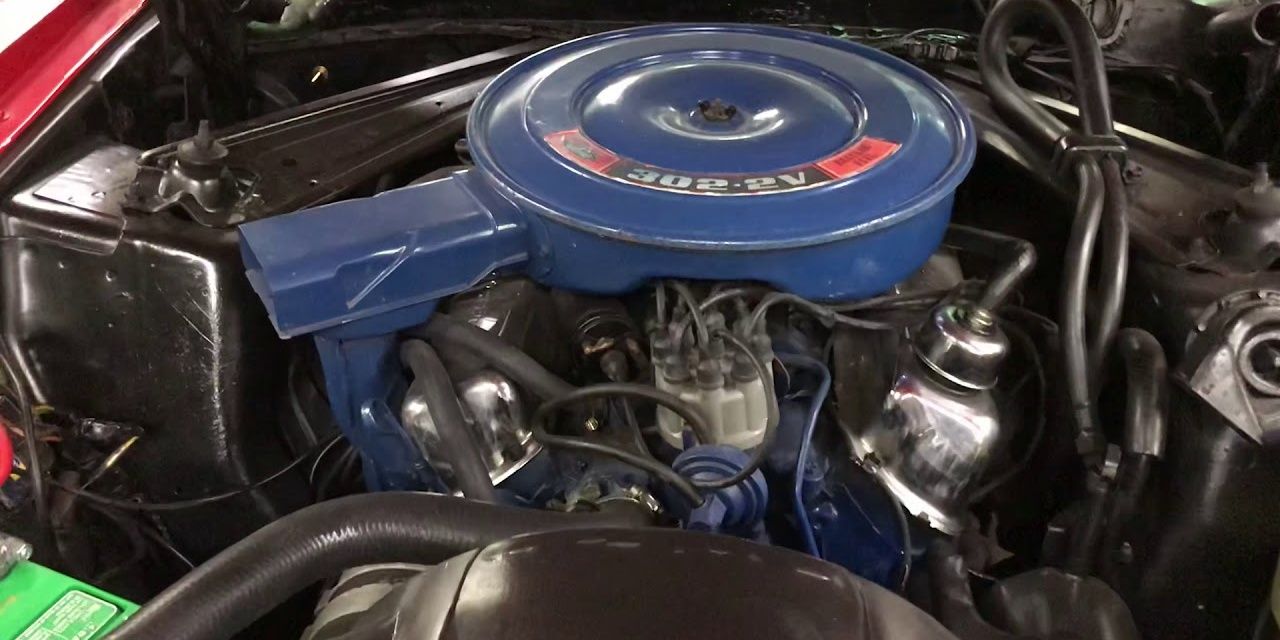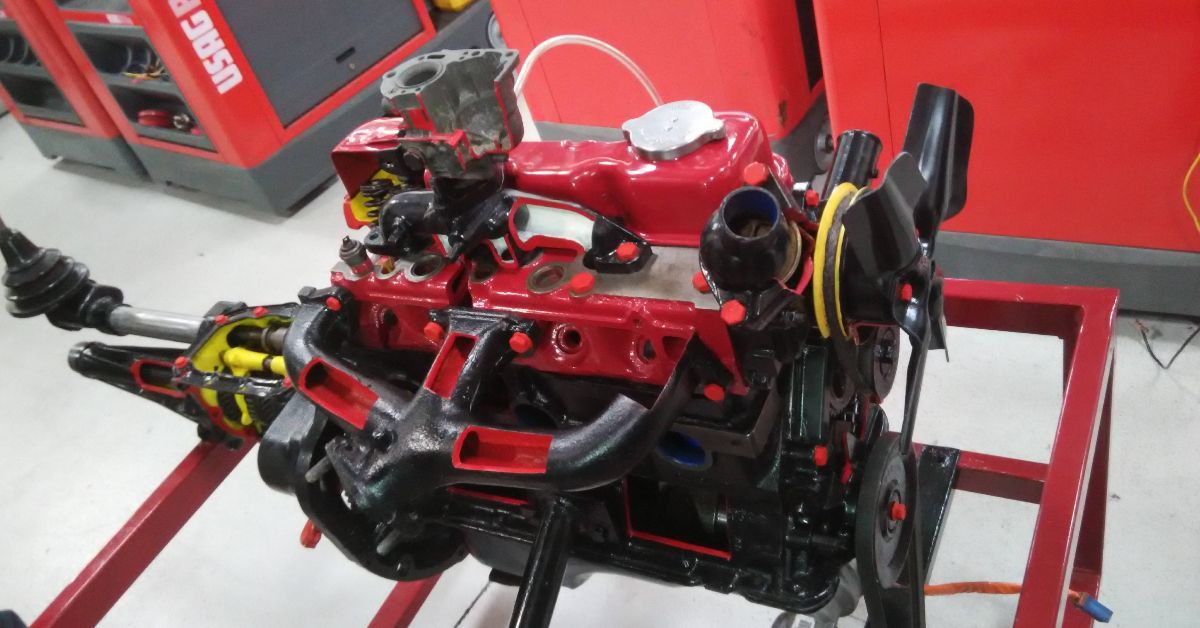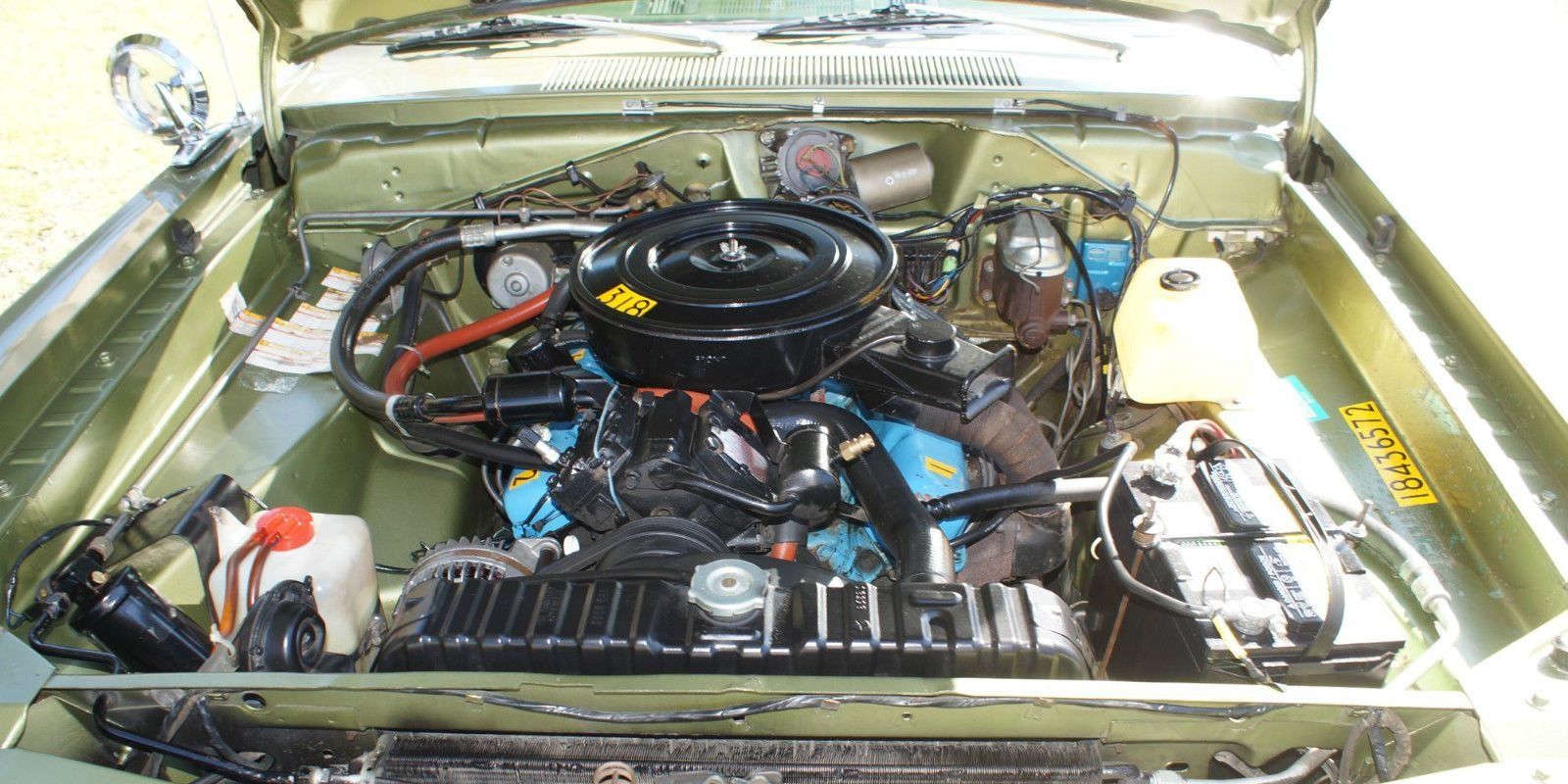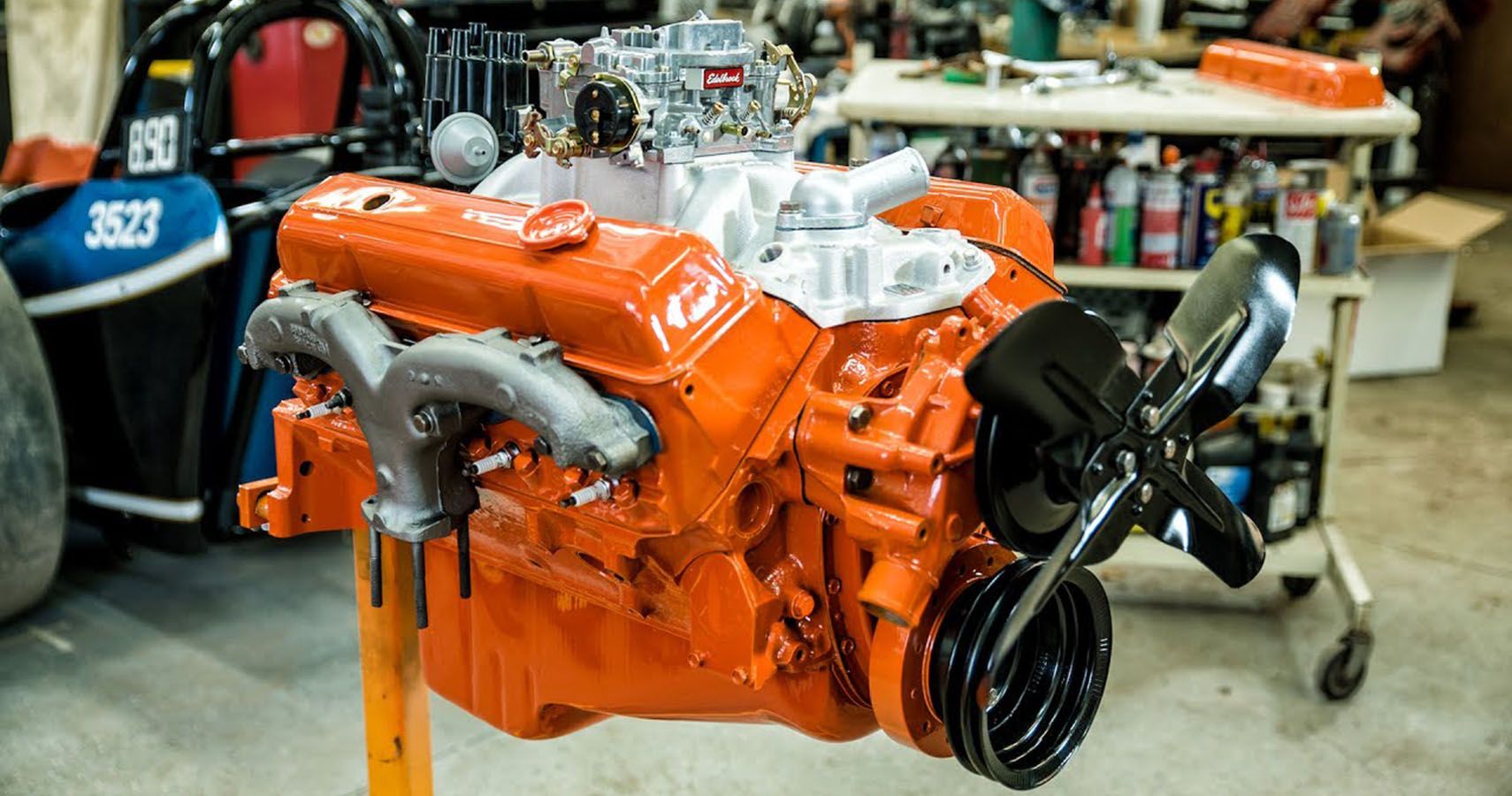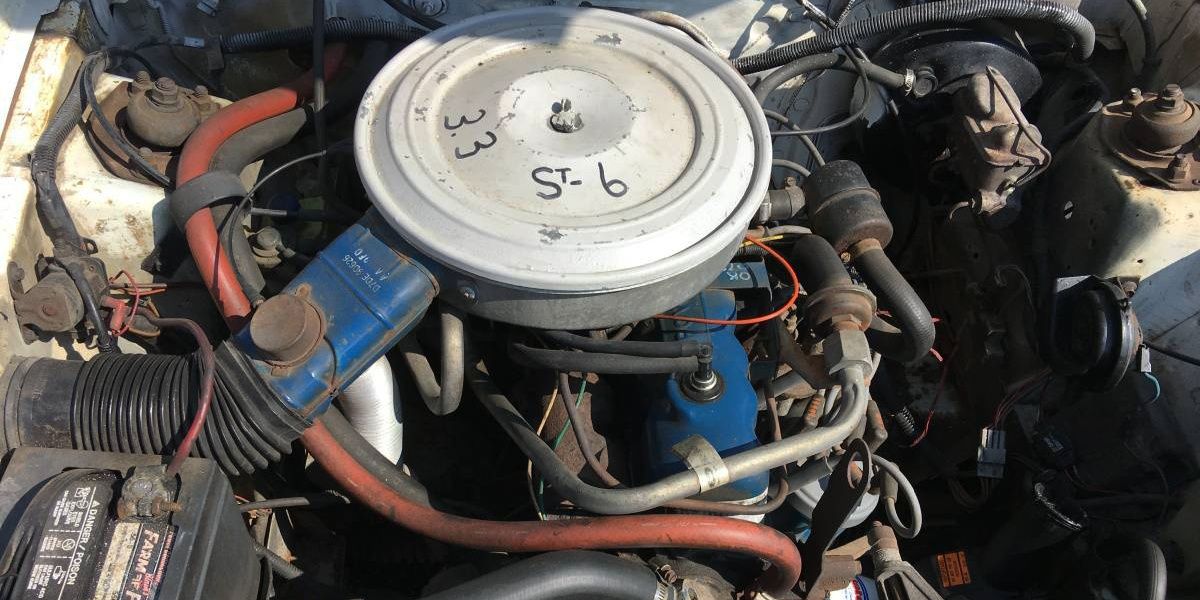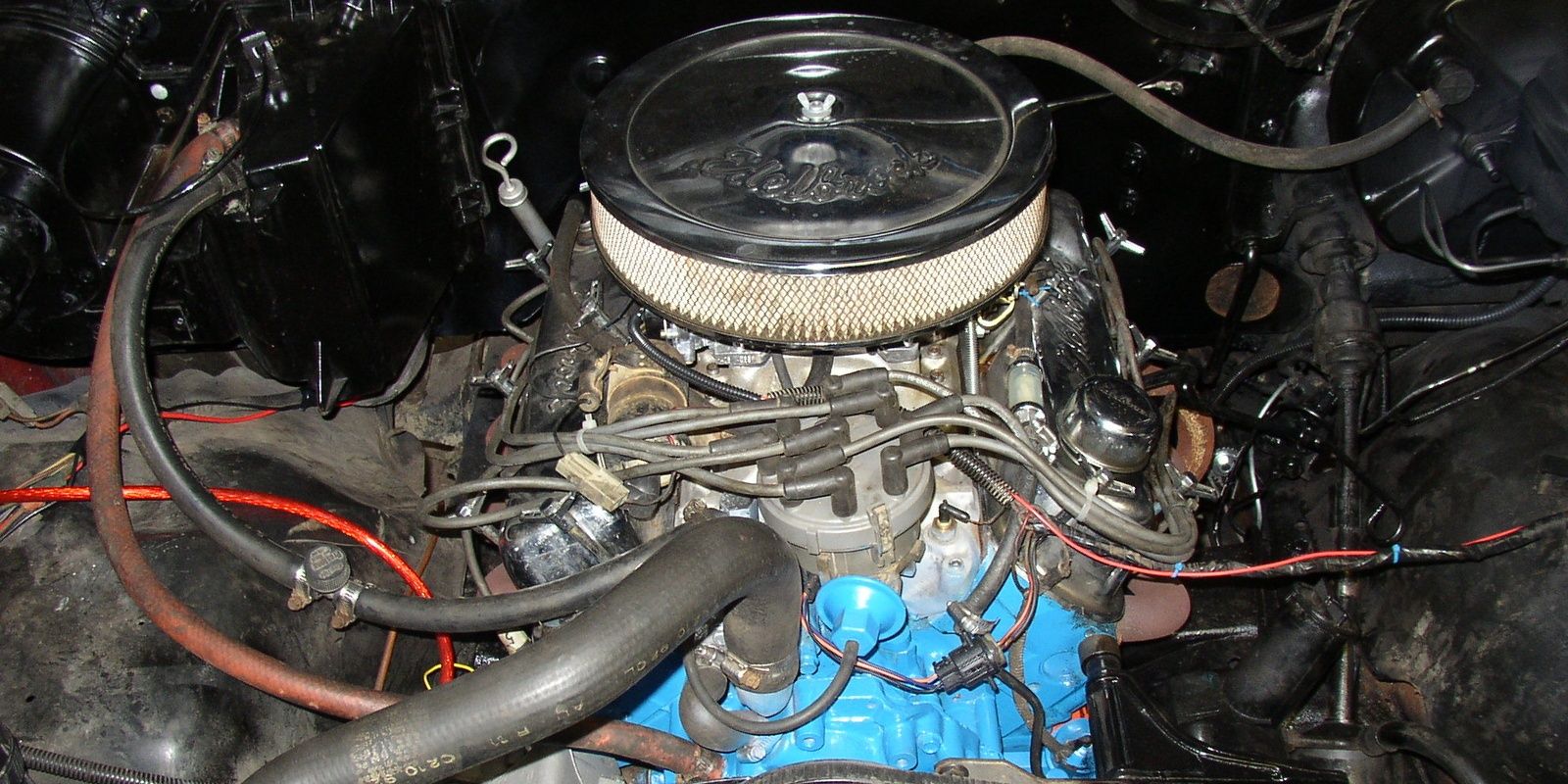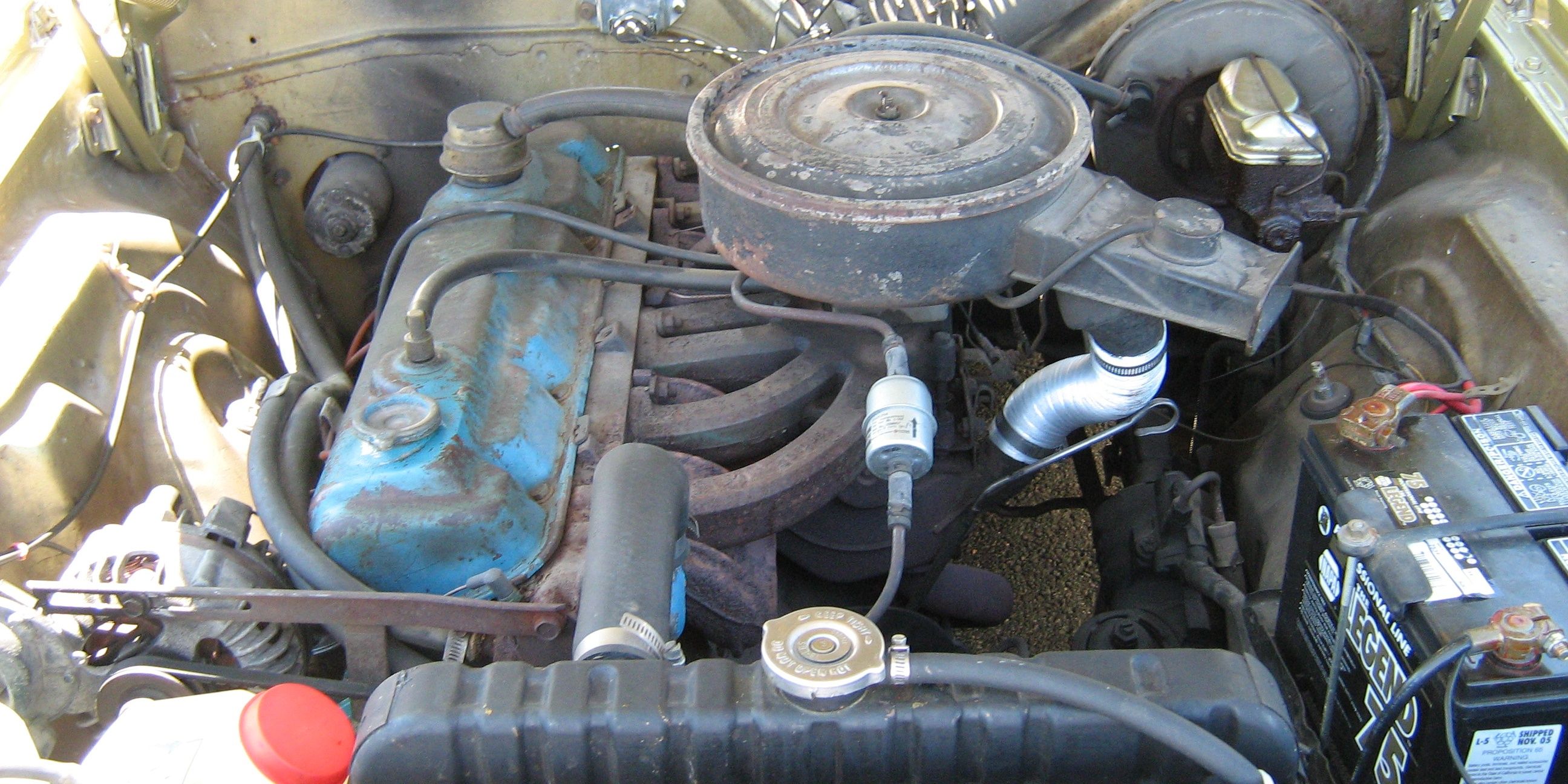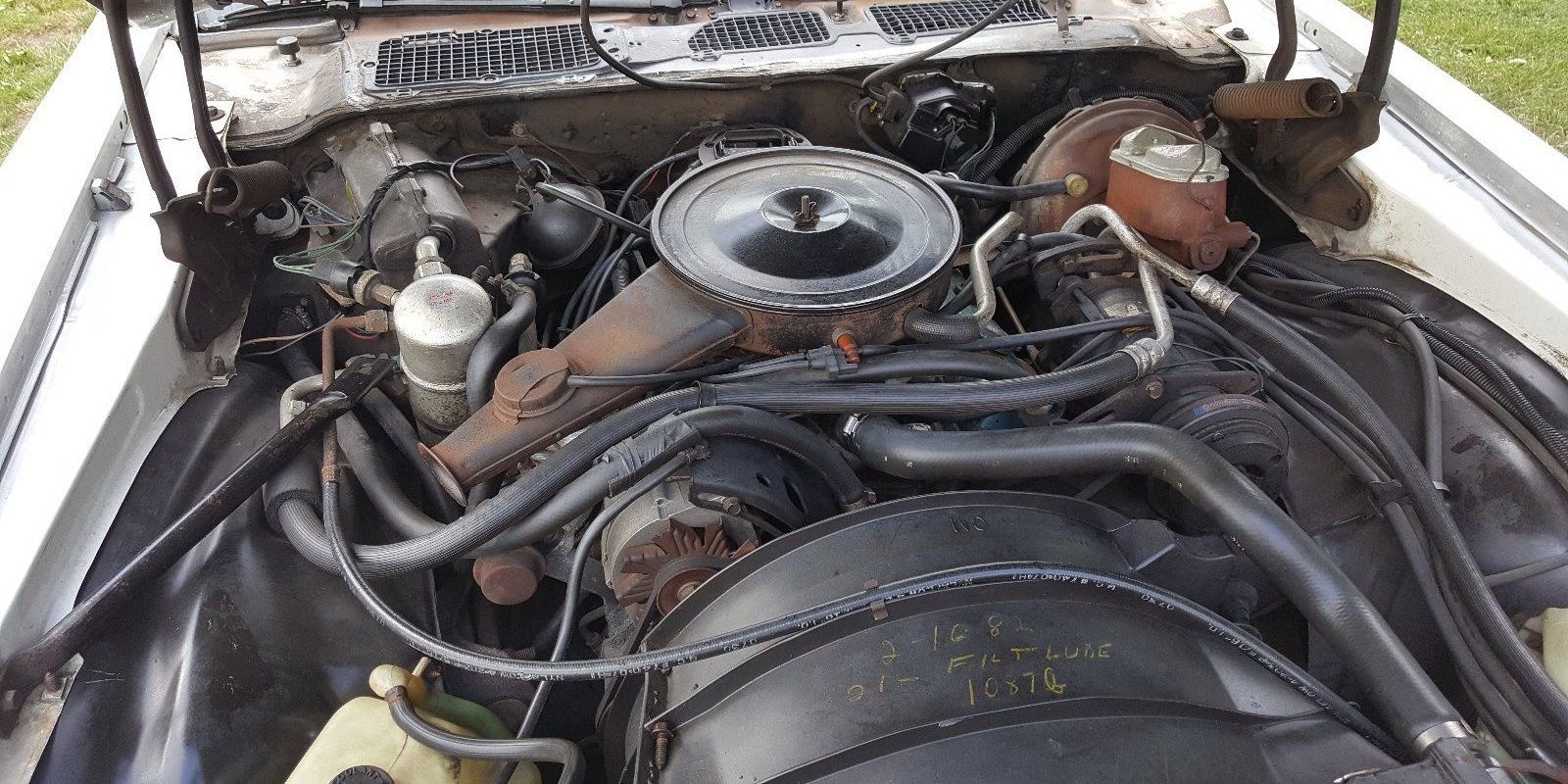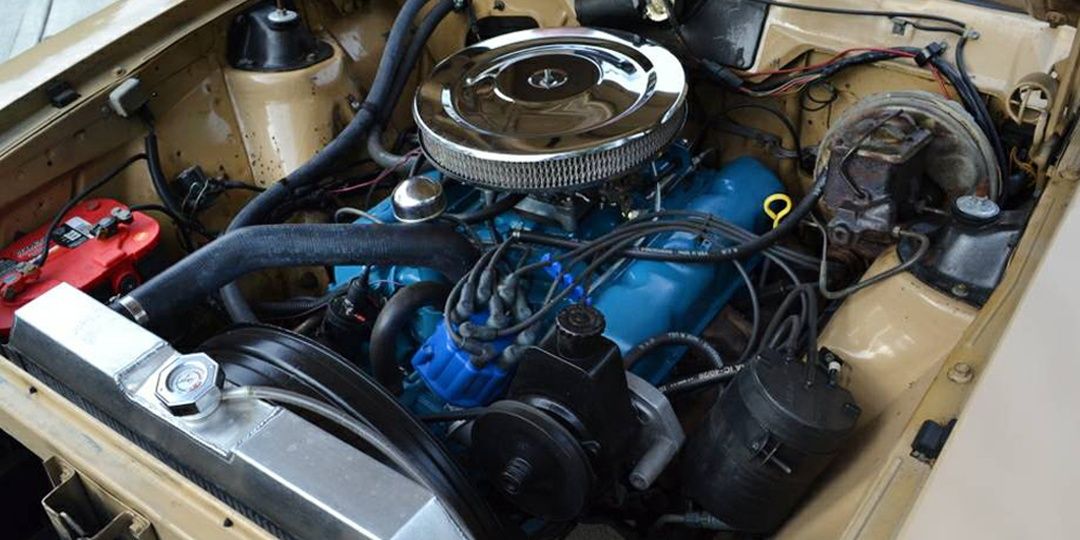Muscle cars are considered fast cars for their generation. Several manufacturers adopted the concept of shoving a large displacement engine into a smaller car, and sometimes those cars aren't even American. There was a time when muscle cars faced a lot of opposition. The two oil crises in the 1970s along with the introduction of emissions-stifling equipment took a big toll on the V8.
Where once upon a time, monstrous demons tried to escape their engine mounts, and by the 1970s they had been replaced by whimpering, domesticated lap dogs. These were some of the least powerful muscle car engines, and least deserving of the platform they were bolted in.
10 1982 2.5-liter Iron Duke
The Iron Duke was a 2.5-liter, iron block inline-four with two valves per cylinder, and an 8.25:1 compression ratio from General Motors. It was used in the Camaro and by default also went into the Pontiac Firebird. In 1982 the Iron Duke made 90 horsepower with throttle body injection, and the Camaro weighed 2,855 pounds. Despite the Camaro's lean scale figure, the engine could only get it to 60 mph in 12.9 seconds, and the quarter-mile in a laughable 19.3. Granted the majority of buyers still had good enough sense to get the V8, the Iron Duke perhaps should never have been an option.
9 1971 318 LA V8
Chrysler's LA engine family stretched almost four complete decades, from 1967 until 2002. It pumped out impressive horsepower figures when equipped with a four-barrel carburetor, even after the standard switched to SAE Net measurements. However, with a two-barrel carburetor, its bark was worse than its bite. The 1971 Dodge Charger was a beast of a car to look at, but it had the option of Chrysler's 5.2-liter LA V8, which made a scarcely believable 155 horsepower. It should have had more power to move over 3,200 pounds of Detroit steel.
RELATED: 10 Things Everyone Forgot About The Dodge Charger Daytona And Plymouth Superbird
8 1975 350 5.7 Liter
General Motors' 5.7-liter small-block had several variants. The 1975 base Corvette got its weakest tune, clocking in at 165 horsepower in a car that weighed more than 3,500 pounds. It was the first Corvette to get a catalytic converter, and it had the option of either a four-speed manual or three-speed automatic. It's known as one of the worst Corvettes of all time, despite its impressive sales figures. A more powerful engine was released late into the model's life, but it only came up to about 205 horsepower.
7 1968 Ford 200 Inline Six
The base model first-generation Mustang came with an inline-six, called the "Thriftpower". It was 3.3 liters, had a 9.2:1 compression ratio, and made 120 horsepower. The inline-six platform is one of the most balanced engines, so it's not an outright disgrace to the Mustang name. However, 120 horsepower is simply not enough for a Mustang. That power measurement is also according to gross horsepower ratings. In all fairness, it seems like Ford eventually gave the base Mustang engine some much-needed attention.
6 1978 General Motors 5.0-liter 305 V8
As every enthusiast knows by now, 5 liters is ample enough to create decent power. The new Mustang makes 460 horsepower from its 5.0-liter Coyote. In the late 1970s, however, the technology just hadn't yet reached that level. Chevrolet's 5.0-liter from 1978, more specifically the 305, made 135 horsepower and spit out performance figures rivaling that of the 1982 Iron Duke, except it used twice as many cylinders. Most of muscle cars' problematic engines came from this era, but they would rebound by the late 1980s.
5 1972 Ford 302 2v 4.9-liter
Ford's inline-six from 1968 got some company in 1972. The Ford 302 with 2 valves per cylinder only made about 20 more horsepower than the inline-six, but it had two more cylinders and went in a car that weighed considerably more than it did in 1968. 1972 models weighed over 3,500 pounds, with the 1968 model clocking in at a lean 2,758. After its facelift in 1970, the Mustang got bigger but without extra power to compensate for its base engines, although a big block was eventually offered.
4 1980 302 CID V8
When 1979 came around the Mustang grew into its Fox Body platform, but the engine didn't fit quite right. Ford's 1980 302 only had 140 horsepower, but at least the V8 was back. However, the Mustang's 2.3-liter turbocharged inline-four made 130 horsepower, which isn't exactly a far cry from the V8. The engine still had a ways to go, but by the end of the decade, it was making over 220 horsepower. Specific years even had forged pistons. It would live on until 1995, the year before the Mustang evolved into using overhead camshafts.
3 1970 198 Slant Six 3.2-liter
Chrysler broke the mold with an unusual, and as yet never duplicated slant six design. The cylinder bank leaned at 30 degrees, earning the "Slant" moniker. This engine was popular with the Plymouth Valiant, a small size car comparable to the early Chevrolet Nova. The slant six used a single unit exhaust and intake manifold. Thanks to the slanted cylinder bank, the engine could fit under the Valiant's hood with its large manifold. Chrysler had its reasons for using this design, like fitment and keeping a low center of gravity, but it only made 125 horsepower, barely more than Ford's 200-cid.
2 1981 Chevrolet 229 V6 3.8-liter
New for 1980 was Chevrolet's 3.8-liter, which went into the Camaro. The 3.8 only came with a two-barrel carburetor and made 110 horsepower. Not to beat a dead horse, but it just wasn't enough. Simulations peg the car's ability to reach 60 mph at 15 seconds, and to the quarter in 20. The Iron Duke suddenly doesn't seem so bad. Thankfully, the nightmare of weak Camaros was coming to an end. 1981 was the final year before the third generation would be released, bringing iconic trims like the Z28 back to life and introducing short-lived fairy tales like the IROC-Z.
1 1976 AMC 304-2B V8
AMC's 304 V8 with its 2 barrel carburetor started life with a strong 210 horsepower, according to gross ratings. After that, the horsepower rating slowly declined, and by the end of the decade in just a few short years that number had whittled away to 125 horsepower. It's a popular engine in Jeeps but was also used in the Gremlin and the Hornet, as well as the Matador and the Spirit. While the Gremlin and Spirit weren't exactly muscle cars, the Hornet and Matador had their rightful place in that arena.

